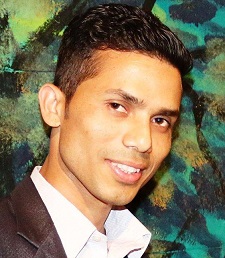K-Pop a Korean music genre which is popular worldwide due to its audio visual elements is slowly pumping into the heart of Nepali youth too. It has made a quantum leap from a national sensation through regional trends to semi-global phenomena.
A rapid growth of Korean popular cultures has rapidly expanded across many parts of the world since the late 1990s. K-Pop has recently entered the dictionary of global popular cultures. Due to its new brand of popular music that is characterized by, among other things, the visual appeal of its idols and performance, as well as significant degree of musical conservatism, it has captivated millions of fans across the world and drawn the attention of the international media.
In case of Nepal, audiences have long lost patience with Western and Indian products that are saturated with violence, drugs, patriarchy and obscenity. The mounting discontent with the Western and Indian media content – television dramas, rap music, warmongering video games, etc has initiated a quest for “clean” alternatives. The vacuum was an enormous boon to the Korean cultural industry. Nepali youths, in shortage of locally produced programs of decent quality, began turning to the Korean option, known for ideological and ethical soundness on top of agility in whipping up a cocktail for the best ingredients from Western and Indian programs
Kathmandu is also known as K-Town in fashion industry and among a new generation of Nepali youths. Korean brands of clothes and cosmetic products are visible everywhere in Kathmandu’s shopping stores. Now Korean products are in high demand among high school and college-going teenagers of Kathmandu.
High school and college-going teenagers of Kathmandu believe, K-Pop performers deliver a sense of modesty and restraint, and insist on working hard and learning more during public appearances, something Western pop artistes do not do. K-Pop music represents a new, colorful and cheerful start, and not an old order, something that will easily appeal to a large number of youths, living in places where economic challenges are rife and political instability common.
In Nepal, through decades of political conflict, people have had their fill of edginess and anguish. Youths don’t have anything like K-Pop. The Korean songs make them dance and smile.
Now in K-Town’s main places like New Road, Durbar Square and Sundhara, "BTS has released new song. It was out of this world". “Yeah, I watched. it was fabulous!" are regular conversation among group of young school and college-going students, all of whom follow Korean bands fervently. Names of South Korean actors, singers and bands roll easily off their tongue.
The Korean Wave, a term that was coined in mid-1999 and refers to spread of popular Korean culture comprising music, movies and drama, is slowly making its presence felt all over Nepal. Today, Korean channels like Arirang TV and KBS are aired by the cable operators in Nepal. Recently South Korean Embassy in Nepal arranged one event where fans met with K-Pop stars. It saw a huge turnout with new generation youths flocking up to meet popular Korean band EXCO.
There are a lot of reasons why the 'K-word' is becoming popular among the Nepali youths, despite the fact that most of the shows and songs are in Korean. Due to the long-term dull taste of Indian music, movies and recently developing anti-Indian sentiments after the Indian blockade and interference on internal political matters, the youths have developed hatred toward Indian movies, songs and led them to follow K-Pop.
Another significant thing contributing to popularity of Korean culture in Nepal is EPS Korean program. Every year thousands of youths take classes of Korean language and go to South Korea for employment. According to a data revealed by the Nepali Embassy in South Korea as of March end 2016, there were 28,010 Nepalese nationals living there. Similarly, Mongolian youths of Nepal feel physical and cultural affinity with Koreans. Due to refreshingly different contents Nepali youths buy CDs and DVDs of Korean dramas, movies and songs, and CD-DVD stores in the city give a special slot for display of Korean movies, dramas and songs. Unlike Indian dramas, Korean TV dramas are not about scheming mother-in-laws and traditional Indian family system. Instead, many of them feature struggles of young boys and girls and their success in finding their place in the world. The easy availability of shows on the internet, which help Nepali K-Pop lovers for downloading Korean TV series, songs and movies.
The Korean complex is not just limited to music, movies and TV. It is also getting into youth fashion in Nepal. It is common for high school and college-going teenagers to get hairstyle and dress of their favorite K-Pop stars. Even hair saloons of Kathmandu have been sporting Korean style for a long time now.
World K-Pop festival is another program which is getting popular by the year among teenagers of Kathmandu. Different participants compete in singing and dancing. Winner of this festival represents Nepal in the final world K-Pop festival in South Korea. It is one of the programs organized by South Korean ministry of foreign affairs with the support of numerous government agencies for promoting Korean culture worldwide. This also attracts the younger generation of Nepal toward the Korean culture. Teenagers in school of Kathmandu, unlike past ones who used to talk about Indian movies, songs and stars, now talk about the new Korean songs, movies and stars.
STRUKPOP, Mongolian Namja etc are dance groups continuously uploading cover dance of K-Pop on YouTube and promoting K-Pop among K-Pop lovers after representing Nepal in the final of global K-Pop festival.
Now due to rapid development of information technology and easy access of the youths to the internet, Korean culture is growing rapidly particularly in urban areas of Nepal. It will certainly give a huge challenge to Nepali culture, and currently dominating Indian and Western culture.
email:
Jkafle15@gmail.com

